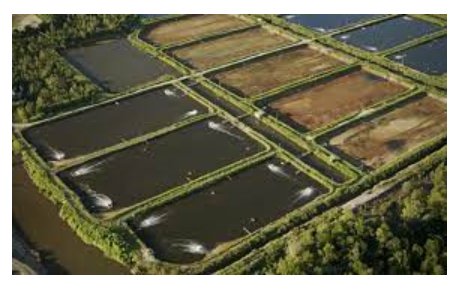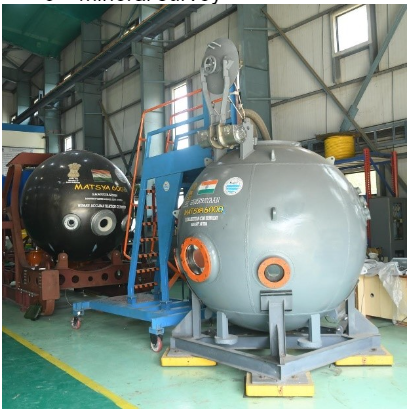Thursday, 9th November 2023
India-Bhutan Relations - Edukemy Current Affairs
In News: Recently Bhutan's King visited to India, both countries have agreed to explore new avenues for regional connectivity, as well as to improve border and immigration facilities, with the aim of bolstering trade and strengthening their partnership.
Key focal points from the discussion
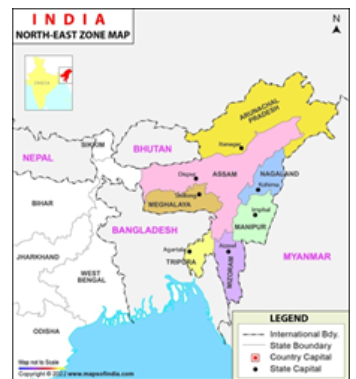
- Connectivity on a Regional Scale
- India and Bhutan are in talks to explore new regional connectivity routes, including the construction of a cross-border railway connecting Gelephu in Bhutan to Kokrajhar in Assam, covering a distance of 58 km.
- Another proposed railway link is an 18 km stretch between Samtse in Bhutan and Banarhat in West Bengal.
- Upgrading border and immigration posts is on the agenda to facilitate these projects.
- Commerce and Linkages
- Both countries are working to facilitate trade by extending the transportation of Bhutanese goods from Haldibari in West Bengal to Chilahati in Bangladesh through Indian territory, aiming to boost trade and streamline the movement of goods.
- Immigration Inspection Point
- The Darranga-Samdrup Jongkhar border crossing between Assam and Bhutan's southeastern district will be designated as an immigration check post, allowing various nationals to enter and exit, which will promote tourism and enhance connectivity.
- Backing the Bhutanese Special Economic Zone (SEZ) Initiative
- There is a commitment to enhance trade infrastructure by upgrading the land customs station at Dadgiri (Assam) to an Integrated Check Post (ICP) and developing facilities on the Bhutanese side in Gelephu, indicating India's support for the Bhutanese Special Economic Zone (SEZ) project.
- Development Assistance
- India has pledged to continue supporting Bhutan's socio-economic development, with a specific focus on the 13th Five-Year Plan, demonstrating the enduring strength of their bilateral relationship.
- Commends India's Assistance to Developing Nations
- Bhutan praised India for successfully hosting the recent G20 Summit, recognizing India's efforts in fostering consensus and constructive decisions outlined in the Delhi Declaration.
- Bhutan also commended India's dedication to representing the interests of Global South countries in G20 deliberations.
- Collaborative Energy Endeavors between India and Bhutan
- Progress on the 1020 MW Punatsangchhu-II hydropower project was noted, with early commissioning expected in 2024.
- An agreement was reached to expand the India-Bhutan energy partnership beyond hydroelectricity to non-hydro renewables, including solar energy, and green initiatives related to hydrogen and e-mobility, with India committing technical and financial support for these projects.
- Recalling Operation All Clear
- The Bhutanese King recalled Operation All Clear, a military operation conducted by the Royal Bhutan Army in 2003 against Assam separatist insurgent groups in the southern regions of Bhutan.
What importance does Bhutan hold for India?
- Strategic Significance
- Bhutan's geographical location, bordered by India and China, makes it a crucial buffer state for safeguarding India's security interests.
- India's support in defense, infrastructure, and communication has played a vital role in preserving Bhutan's sovereignty and territorial integrity.
- Collaborative efforts include enhancing Bhutan's border infrastructure to bolster defense capabilities.
- Economic Importance
- India stands as Bhutan's primary trading partner and a significant destination for its exports.
- Bhutan's hydropower potential, a key revenue source, has been developed with India's assistance.
- Financial aid from India supports Bhutan's overall development initiatives.
- Cultural Significance
- Strong cultural ties exist between Bhutan and India, rooted in their shared Buddhist heritage.
- India contributes to preserving Bhutan's cultural richness, and Bhutanese students often pursue higher education in India.
- Environmental Relevance
- Bhutan's commitment to carbon neutrality finds support from India, particularly in areas like renewable energy, forest conservation, and sustainable tourism.
- India's assistance contributes to Bhutan's efforts to maintain its environmentally conscious stance.
Challenges in India-Bhutan relations
- China's Growing Influence
- China's increasing presence in Bhutan, especially along the disputed border, raises concerns for India's long standing alliance with Bhutan.
- China's economic and military influence challenges India's strategic interests in Bhutan.
- Border Disputes
- The 699 km border between India and Bhutan, mostly peaceful, has faced occasional incursions by Chinese forces.
- The 2017 Doklam standoff underscored potential flashpoints that could strain India-Bhutan relations if not managed carefully.
- Hydropower Projects
- Bhutan's economy heavily relies on hydropower, with India as a major development partner.
- Concerns in Bhutan about the terms of some projects, seen as overly favorable to India, have led to public opposition.
- Trade Issues
- India dominates Bhutan's trade, accounting for over 80% of imports and exports.
- Bhutan seeks greater market access in India to address the trade imbalance and reduce dependence on Indian imports.
Way Forward
- India has the potential to contribute to Bhutan's economic growth by investing in infrastructure, tourism, and various sectors, paving the way for self-reliance and job creation.
- Initiating cultural exchange programs can deepen mutual understanding, promoting appreciation for each other's culture, art, music, and literature.
- Facilitating visa-free movement between the two nations can enhance sub-regional collaboration.
- Strengthening strategic cooperation is essential for addressing common security challenges, allowing collaborative efforts to combat terrorism, drug trafficking, and other transnational crimes.
Source: TH
Indo-Pacific Maritime Domain Awareness
In News: The Chief of the Naval Staff Admiral highlighted at the Goa Maritime Conclave the pivotal role of networks like the Indo-Pacific Maritime Domain Awareness (IPMDA) in securing the stability of the Indian Ocean Region (IOR)
About The Indo-Pacific Maritime Domain Awareness (IPMDA)
Introduction
- The Quad group (India, Australia, Japan, and the US) introduced IPMDA at the 2022 Tokyo summit.
- It aims to monitor "dark shipping" and provide a real-time maritime overview in the Pacific Islands, Southeast Asia, and the Indian Ocean region (IOR).
- Objective
- A significant initiative focused on enhancing security and stability in the Indo-Pacific, a key player in global geopolitics.
- Aims to establish a comprehensive system for monitoring and securing maritime activities, ensuring safety in critical sea lines, and fostering cooperation among like-minded nations.
- Importance of Navy
- Emphasizes the Navy's critical role in securing the IOR and Indo Pacific.
- Force modernization is imperative, with the current Navy boasting over 140 ships and submarines, targeting 170 to 180 by 2028.
- The Navy aims for complete self-reliance (AtmaNirbhar) by 2047.
What milestones and advancements have the Goa Maritime Conclave (GMC) witnessed?
- Collaboration Among Navies
- Successful convergence of Indian Ocean region navies at the Conclave for joint efforts in addressing shared maritime challenges.
- Collaboration extends to responding to natural disasters, conducting joint exercises, and sharing critical maritime information.
- Effective Response to Piracy
- Establishment of robust information-sharing mechanisms, including the Information Fusion Centre for the Indian Ocean Region (IFC-IOR) at Gurugram.
- Improved situational awareness enables more effective responses to maritime threats, piracy, and other security issues.
- Improving Maritime Domain Awareness (MDA)
- Enhanced MDA through intelligence and information sharing.
- Benefits extend to improved maritime security, better management of marine resources, and environmental protection.
- Adopting Common Maritime Priorities
- Last edition witnessed unanimous adoption of 'Common Maritime Priorities (CMPs)' by all Members.
- Indicates a shared approach among Members to find regional solutions for regional challenges.
- Collaboration Among Navies
- Successful convergence of Indian Ocean region navies at the Conclave for joint efforts in addressing shared maritime challenges.
- Collaboration extends to responding to natural disasters, conducting joint exercises, and sharing critical maritime information.
- Effective Response to Piracy
- Establishment of robust information-sharing mechanisms, including the Information Fusion Centre for the Indian Ocean Region (IFC-IOR) at Gurugram.
- Improved situational awareness enables more effective responses to maritime threats, piracy, and other security issues.
- Improving Maritime Domain Awareness (MDA)
- Enhanced MDA through intelligence and information sharing.
- Benefits extend to improved maritime security, better management of marine resources, and environmental protection.
- Adopting Common Maritime Priorities
- Last edition witnessed unanimous adoption of 'Common Maritime Priorities (CMPs)' by all Members.
- Indicates a shared approach among Members to find regional solutions for regional challenges.
What are the key challenges associated with the Indian Ocean Region?
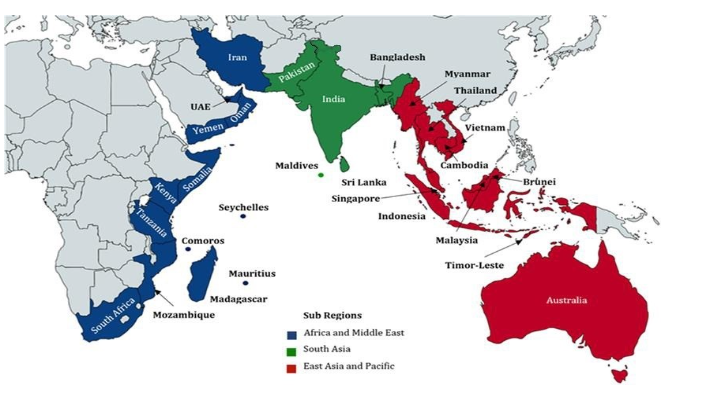
- Geopolitical Competition
- The Indian Ocean region is a focal point for geopolitical rivalry among major powers and regional actors.
- Its strategic location allows for power projection and influence over regional affairs.
- Key Choke Points
- Presence of crucial choke points like the Strait of Hormuz, Bab el-Mandeb Strait, and the Malacca Strait enhances the region's strategic significance.
- China's Militarization Move
- China poses a challenge to India's interests, providing military and infrastructural aid to India's neighbors.
- Examples include submarines for Myanmar and an overseas military base in Djibouti.
- Maritime Security Threats
- The Indian Ocean Region faces diverse maritime security threats, including piracy, smuggling, illegal fishing, and terrorism.
- The vast expanse of the ocean poses challenges to effective monitoring and security.
- Environmental Challenges
- Significant environmental issues in the IOR include climate change, rising sea levels, coral reef degradation, and marine pollution.
- These challenges impact coastal communities, marine ecosystems, and the livelihoods of millions of people.
|
UPSC Previous Year Questions Prelims (2015) Q. With reference to ‘Indian Ocean Rim Association for Regional Cooperation (IOR-ARC)’, consider the following statements:
Which of the statements given above is/ are correct? (a) 1 only (b) 2 only (c) Both 1 and 2 (d) Neither 1 nor 2 Ans: (d) Mains (2014) Q. With respect to the South China sea, maritime territorial disputes and rising tension affirm the need for safeguarding maritime security to ensure freedom of navigation and overflight throughout the region. In this context, discuss the bilateral issues between India and China. |
Source: TH
Artificial Intelligence Safety Summit 2023
In News: The AI Safety Summit 2023, hosted at Bletchley Park, England, has marked a pivotal moment in the worldwide strategy for addressing the complexities presented by cutting-edge AI technologies.
Key Facts of Artificial Intelligence Safety Summit 2023
- Bletchley Park Declaration
- Global agreement on addressing frontier AI risks, the Bletchley Park Declaration signifies a political consensus among major AI players worldwide.
- Recognizes the potential benefits and risks of AI, especially in domains like cybersecurity, biotechnology, and disinformation.
- Stresses the necessity of international collaboration involving companies, civil society, and academia to mitigate global AI-related risks.
- Announces the establishment of a regular AI Safety Summit for ongoing dialogue and collaboration, with the next summit hosted by France.
- India's Stance
- India shifts from a non-regulatory stance on AI to actively formulating regulations based on a risk-based, user-harm approach.
- Advocates for a global framework for "ethical" AI tools, emphasizing a commitment to responsible AI usage.
- Expresses interest in establishing regulatory bodies at both domestic and international levels to ensure responsible AI use.
- Awaits the implementation of the Digital India Act, 2023, expected to introduce issue-specific regulations for online intermediaries, including AI-based platforms.
|
UPSC Previous Year Questions Prelims (2020) Q. With the present state of development, Artificial Intelligence can effectively do which of the following?
Select the correct answer using the code given below: (a) 1, 2, 3 and 5 only Ans: (b) Mains (2021) Q. What are the main socio-economic implications arising out of the development of IT industries in major cities of India? |
Source: IE
5th COP to Minimata Convention
In News: The fifth meeting of the Conference of the Parties to the Minamata Convention on Mercury, is scheduled to be held in Geneva, Switzerland.
About Minamata Convention and its objectives
- It is an International environmental treaty focusing on mercury and its compounds' harmful effects on human health and the environment.
- It targets specific human activities contributing to widespread mercury pollution.
- Implementation is foreseen to significantly reduce mercury pollution in the coming decades.
- It was signed in 2013, the Convention became enforceable in 2017.
- Operates under the United Nations Environment Programme (UNEP).
- 128 countries are signatories to the Convention,119 countries are active parties.
- India, a party to the Minamata Convention, ratified it in 2018.
Objectives of the Convention
- Protect human health and the environment from anthropogenic emissions and releases of mercury and its compounds.
- Covers the entire mercury life cycle, implementing controls and reductions across various processes, products, and industries.
- Addresses mercury mining, export and import, storage, and disposal.
- Identifies at-risk populations and emphasizes improvements in healthcare facilities.
- Provides training for healthcare personnel to better handle mercury-related ailments and diseases.
Source: UNEP
Subansiri Lower Hydroelectric Project
In News: India's largest hydel project, the Subansiri Lower Hydroelectric Project, encountered a setback as a landslide blocked the sole operational diversion tunnel, halting the water flow downstream into the Subansiri River, a significant Brahmaputra tributary.
About Subansiri Lower Hydroelectric Project
- Overview
- A run-of-river scheme aiming to generate 2,000 MW of power from the Subansiri River along the Arunachal Pradesh and Assam border.
- Executed by the National Hydroelectric Power Corporation (NHPC).
- Project Features
- Involves a 116-metre-high concrete gravity dam, a 34.5-km-long reservoir, five diversion tunnels, eight spillways, and a powerhouse with eight 250-MW units.
- A gravity dam constructed from concrete or cement, utilizing its weight to resist the horizontal pressure of water.
- Power Generation and Benefits
- Expected to generate approximately 7,500 million units of power annually in a 90% dependable year.
- Aims to provide flood moderation, irrigation, and drinking water benefits to downstream areas.
- Construction Timeline
- NHPC initiated construction in January 2005.
- Construction work halted from December 2011 to October 2019 due to local protests.
- Resumed on October 15, 2019, following National Green Tribunal clearance.
|
UPSC Previous Year Questions Prelims (2014) Consider the following rivers:
Which of the above flows/flow through Arunachal Pradesh? (a) 1 only Ans: (b) |
Source: IE
Russia’s Withdrawal From Comprehensive Nuclear Test Ban Treaty
In News: Russia has recently suggested that it is in the process of withdrawing its ratification of the Comprehensive Nuclear Test Ban Treaty (CTBT).
About CTBT
- Origin of the CTBT
- Multilateral treaty aiming to prohibit all nuclear explosions, whether for military or peaceful purposes.
- Originating from the Cold War era, particularly during the nuclear arms race between the U.S. and the Soviet Union.
- Global nuclear tests exceeded 2,000 between 1945 and 1996, prompting environmental and health concerns.
- Earlier Initiatives
- Limited Nuclear Test-Ban Treaty (LTBT) of 1963 prohibited nuclear testing in the atmosphere, outer space, and underwater, allowing underground tests.
- Threshold Test Ban Treaty (TTBT) of 1974 prohibited underground nuclear weapons tests but lacked a comprehensive ban.
- CTBT Advancement
- Negotiated in 1994 at the Conference on Disarmament in Geneva.
- Adopted by the United Nations in 1996, imposing a complete ban on nuclear weapons testing.
- Became available for signature in September 1996, representing a significant global effort to halt nuclear testing.
- Enforcement Path
- CTBT enters into force 180 days after ratification by all 44 states listed in Annex 2, possessing nuclear reactors or research reactors at the treaty's adoption.
- Present Status
- Signed by 187 nations and ratified by 178.
- Formal enforcement awaits ratification by the remaining eight nations: China, India, Pakistan, North Korea, Israel, Iran, Egypt, and the United States.
|
UPSC Previous Year Questions Prelims (2018) Q. What is/are the consequence/consequences of a country becoming the member of the ‘Nuclear Suppliers Group’?
Which of the statements given above is/are correct? (a) 1 only Ans: (a) Prelims (2015) Q. Consider the following countries:
Which among the above are Nuclear Weapons States as recognized by the Treaty on the Non-Proliferation of Nuclear-Weapons, commonly known as Nuclear Non-Proliferation Treaty (NPT)? (a) 1 and 2 only Ans: (a) Mains (2018)
|
Source: Aljazeera
Tanzania - Edukemy Current Affairs
In News: IIT Madras establishes its inaugural international campus on the picturesque Zanzibar Island in Tanzania.
About Tanzania
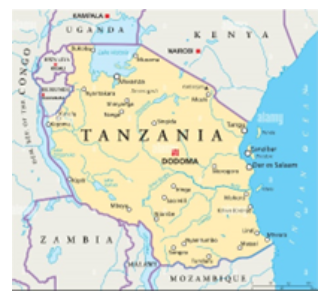
- Tanzania, located in East Africa, is part of the African Great Lakes region
- Borders Uganda to the north, Kenya to the northeast, Comoro Islands and the Indian Ocean to the east
- Southern borders with Mozambique, Malawi, and southwest border with Zambia
- Western borders with Rwanda, Burundi, and the Democratic Republic of the Congo
- Northeastern Tanzania is home to Mount Kilimanjaro, Africa's highest mountain
- Three of Africa's Great Lakes are partially within Tanzania: Lake Victoria to the north, Lake Tanganyika to the west (continent's deepest lake), and Lake Malawi to the south.
Source: TS
Snake Venom - Edukemy Current Affairs
In News: The government veterinary department reveals that the nine snakes seized from five men posing as YouTuber Elvish Yadav's associates had their venom glands removed.
About Snake Venom
- Snake venom is a toxic saliva containing zootoxins used for prey immobilization and defense against threats.
- Injected through unique fangs during a bite, some snakes can also spit venom.
- Glands producing zootoxins are modified parotid salivary glands located on each side of the head, below and behind the eye.
- Venom, with over 20 compounds, is stored in large glands (alveoli) and conveyed to fangs through a duct.
- Snakes, like cobras and Indian kraits, were historically made to bite on consumers' feet or tongue.
- Snake venom affects the human body with initial euphoria, jerky movements, and vision blurring, followed by irritability and lethargy.
- The neurotoxin nature of snake venom may cause analgesia, leading to a sense of well-being and heightened arousal.
- Neurotoxins in cobra venom bind to brain receptors involved in euphoric experiences.
- Snake venom's psychotropic effects include the release of serotonin, with hypnotic and sedative properties.
- Using snake venom as a recreational drug is dangerous due to unknown fatal thresholds, risking addiction and death.
Source: HT
LEAP AHEAD Initiative - Edukemy Current Affairs
In News: MeitY has introduced the LEAP AHEAD initiative focusing on fostering and expediting the growth of technology startups in India.
About LEAP AHEAD Initiative
- Goal: Support tech startups through funding, mentorship, and global connections.
- Full Form: LEAP AHEAD (Launchpad for Tech Entrepreneurs towards Accelerated Growth and Pioneering AHEAD).
- Startup Benefits:
- Three-Month Intensive Mentorship Program
- One-on-One Mentorship with Investors and Industry Experts
- Funding Potential of up to ₹1 crore
- Access to Global Networks and Market Exposure
- One-year Free Associate Membership with TiE Delhi-NCR
- Eligibility Criteria for the startup:
- Involved in software product development
- Registered with DPIIT under the Startup India program
- Demonstrated revenue generation and external investment
Source: SSM
Intercontinental Ballistic Missiles
Context: Russia announced the successful test launch of an intercontinental ballistic missile with nuclear warhead capabilities, conducted from one of its submarines.
About Intercontinental Ballistic Missiles
- ICBM Definition: Missile with a minimum range of 5,500 kilometers designed for nuclear weapons delivery.
- Can also carry conventional, chemical, and biological weapons, but ICBMs have not deployed them.
- International Convention against ICMB:
- The Hague Code of Conduct against Ballistic Missile Proliferation (HCOC) aims to globally curb ballistic missile proliferation.
- India is a signatory to HCOC.
- Missile Technology Control Regime (MTCR): Established in April 1987, it aims to limit the spread of ballistic missiles and unmanned delivery systems for chemical, biological, and nuclear attacks.
- India joined MTCR in 2016.
- The Hague Code of Conduct against Ballistic Missile Proliferation (HCOC) aims to globally curb ballistic missile proliferation.
- Countries with ICBMs: India, Russia, the United States, North Korea, China, Israel, the United Kingdom, and France.
- North Korea's Hwasong-14 ICBM: Successfully tested in July 2017.
Source: Aljazeera
Deepfakes: Opportunities, Threats, & Regulation
Context: This article delves into the implications of the recent deepfake video featuring actor Rashmika Mandanna, emphasizing the necessity of adopting a comprehensive regulatory framework for such technologies.
About Deepfakes
- Definition: A term denoting digitally manipulated synthetic media replacing one person's likeness with another, utilizing advanced AI techniques.
Applications of Deepfakes:
- Film Dubbing
- Utilizing deepfake technology for realistic lip-syncing, catering to actors speaking different languages, enhancing accessibility and immersion for a global audience.
- Education
- Harnessing deepfake technology to facilitate engaging lessons by bringing historical figures to life in the classroom or creating interactive simulations of diverse scenarios.
- Art
- Employing deepfake technology as a creative tool for artists to express themselves, experiment with styles, or collaborate with peers.
- Autonomy and Expression
- Empowering individuals through deepfake technology to control their digital identity, protect privacy, or express identity in unique ways.
- Amplification of Message and its Reach
- Leveraging deepfake technology to amplify the voice and impact of individuals with important messages, particularly those facing discrimination, censorship, or violence.
- Digital Reconstruction and Public Safety
- Applying deepfake technology to reconstruct missing or damaged digital data, restore old photos or videos, and enhance low-quality footage.
- Enhancing public safety by creating realistic training materials for emergency responders, law enforcement, or military personnel.
- Innovation
- Inspiring innovation across various fields and industries through deepfake technology, enabling new forms of storytelling, interaction, diagnosis, or persuasion.
Challenges of Deepfakes
- Spreading False Information
- Deepfakes purposefully spread misinformation, causing confusion on critical issues.
- Harassment and Intimidation
- Designed deepfakes can harass, intimidate, and undermine individuals, fueling unethical actions like revenge porn.
- Blackmail and Ransom
- Deepfake technology can create blackmail materials, demanding money in exchange for not releasing fake videos.
- Fabricating Evidence
- Deepfakes are used to fabricate evidence, defrauding the public, harming state security, or manipulating legal proceedings.
- Reputation Tarnishing
- Deepfakes create non-existent images or videos to tarnish someone's reputation, damaging credibility and causing financial losses.
The Way Forward
- Understanding The Life Cycle of Deepfakes
- Creation, dissemination, and detection are the key phases.
- AI regulation can mitigate unlawful or non-consensual deepfake creation.
- Learning from China
- China mandates consent for deepfake technologies, verifies user identities, and offers recourse.
- Canadian Approach
- Emphasizes mass public awareness campaigns and potential legislation against malicious deepfake creation.
- Using Watermarks for Attribution
- Essential for detection and attribution of AI-generated videos.
- Reveals origin and ownership, aiding attribution and acting as a deterrent.
- Deterring Inappropriate Content
- Online platforms should educate users on content policies.
- Implement measures to deter the upload of inappropriate content.
- Developing Deepfake Detection Technologies
- Develop more sophisticated algorithms.
- Explore methods based on context, metadata, or other factors for identification.
- Robust Digital Governance and Legislation
- Establish clear laws prohibiting malicious deepfake use.
- Provide effective remedies and sanctions for victims and perpetrators of digital harm.
- Media Literacy and Awareness
- Educate the public and media about deepfakes.
- Equip them with skills to verify and report suspicious content.
- Encouraging Ethical and Responsible Use
- Establish and enforce codes of conduct for creators and users.
- Promote positive and beneficial applications of deepfake technology.
Source: IE
Share the article
Get Latest Updates on Offers, Event dates, and free Mentorship sessions.

Get in touch with our Expert Academic Counsellors 👋
FAQs
UPSC Daily Current Affairs focuses on learning current events on a daily basis. An aspirant needs to study regular and updated information about current events, news, and relevant topics that are important for UPSC aspirants. It covers national and international affairs, government policies, socio-economic issues, science and technology advancements, and more.
UPSC Daily Current Affairs provides aspirants with a concise and comprehensive overview of the latest happenings and developments across various fields. It helps aspirants stay updated with current affairs and provides them with valuable insights and analysis, which are essential for answering questions in the UPSC examinations. It enhances their knowledge, analytical skills, and ability to connect current affairs with the UPSC syllabus.
UPSC Daily Current Affairs covers a wide range of topics, including politics, economics, science and technology, environment, social issues, governance, international relations, and more. It offers news summaries, in-depth analyses, editorials, opinion pieces, and relevant study materials. It also provides practice questions and quizzes to help aspirants test their understanding of current affairs.
Edukemy's UPSC Daily Current Affairs can be accessed through:
- UPSC Daily Current Affairs can be accessed through Current Affairs tab at the top of the Main Page of Edukemy.
- Edukemy Mobile app: The Daily Current Affairs can also be access through Edukemy Mobile App.
- Social media: Follow Edukemy’s official social media accounts or pages that provide UPSC Daily Current Affairs updates, including Facebook, Twitter, or Telegram channels.

